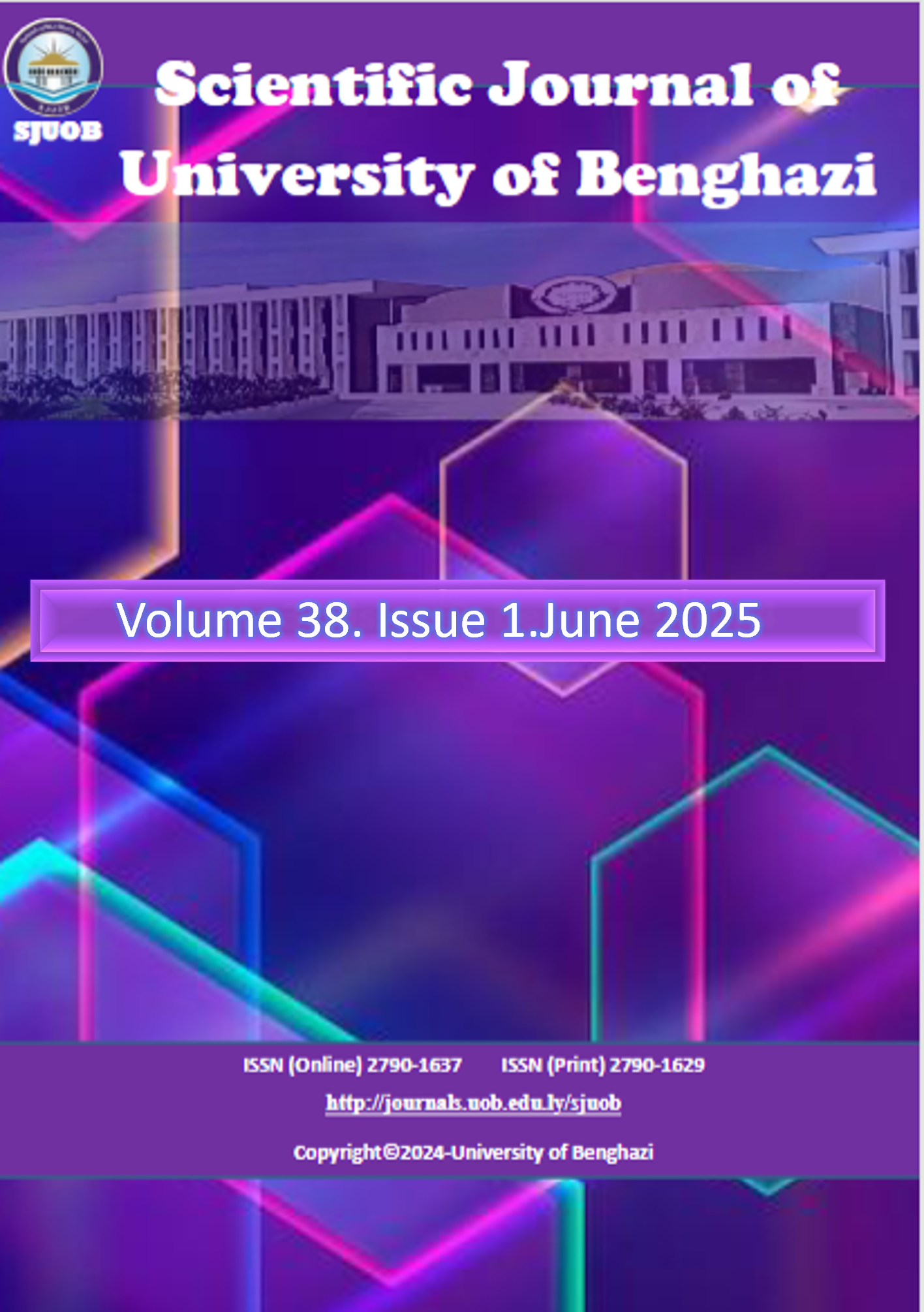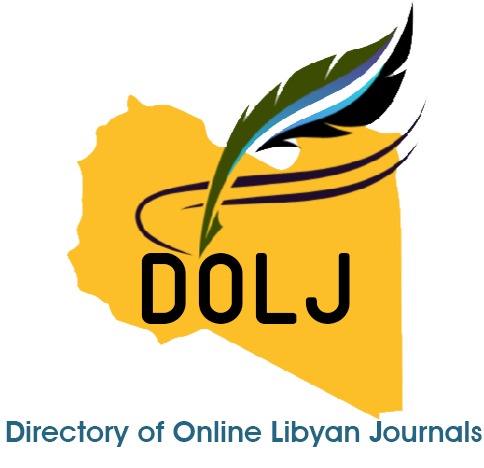Heavy metals in water associated with oil and soil were treated using chemical and electrophoretic precipitation methods.
DOI:
https://doi.org/10.37376/sjuob.v38i1.7326Keywords:
heavy metals, water associated with oil soil water treatment, Electrophoretic PrecipitationAbstract
Chemicals such as potassium hydroxide (KOH), potassium ferrocyanide (K₄[Fe(CN)₆]), and oxalic acid (H₂C₂O₄) have been used as agents capable of rapidly and efficiently forming precipitates with heavy metal ions under natural environmental conditions. The active components in these chemicals act as chelating agents, enabling them to form stable precipitates or complexes with heavy metals present in water associated with oil and in the surrounding soil. This study compares the efficiency and characteristics of chemical precipitation products with those formed via cathodic deposition during electrochemical treatment. The ability of both methods to precipitate various heavy metals (HMs)—including Cr, Fe, Ni, Mg, Cu, Zn, Ag, Cd, Mn, and Pb—was investigated. Each method demonstrated varying effectiveness in removing specific metals, and it was measured deposition efficiency, standard deviation S and a coefficient of variation (CV). Chemical and electrical methods have treated oil-related water and soil contaminated with common heavy metals, which could be removed and treated chemically and electrically. The results revealed very high concentrations of these harmful heavy metals, which have contaminated oil-related water, the soil, the groundwater beneath it, and the plants it irrigates. This poses risks to human and animal health and may even cause diseases and cancer.Downloads
References
Tao, H. C., Lei, T., Shi, G., Sun, X. N., Wei, X. Y., Zhang, L. J., & Wu, W. M. (2014). Removal of heavy metals from fly ash leachate using combined bioelectrochemical systems and electrolysis. Journal of Hazardous materials, 264, 1-7.
https://doi.org/10.1016/j.jhazmat.2013.10.057
Shim, H. Y., Lee, K. S., Lee, D. S., Jeon, D. S., Park, M. S., Shin, J. S., ... & Chung, D. Y. (2014). Application of electrocoagulation and electrolysis on the precipitation of heavy metals and particulate solids in washwater from the soil washing. Journal of Agricultural Chemistry and Environment, 3(04), 130. http://creativecommons.org/licenses/by/4.0/
Luo, H., Liu, G., Zhang, R., Bai, Y., Fu, S., & Hou, Y. (2014). Heavy metal recovery combined with H2 production from artificial acid mine drainage using the microbial electrolysis cell. Journal of hazardous materials, 270, 153-159.
DOI: 10.1016/j.jhazmat.2014.01.050
Colantonio, N. (2016). Heavy metal removal from wastewater using microbial electrolysis cells (Doctoral dissertation). https://doi.org/10.1016/j.jhazmat.2014.01.050
Fischer, R., Seidel, H., Rahner, D., Morgenstern, P., & Löser, C. (2004). Elimination of heavy metals from leachates by membrane electrolysis. Engineering in life sciences, 4(5), 438-444. https://doi.org/10.1002/elsc.200420049
Tsai, L., Fang, H., Lin, J., Chen, C., & Tsai, F. (2009). Recovery and stabilization of heavy metal sludge (Cu and Ni) from etching and electroplating plants by electrolysis and sintering. Science in China Series B: Chemistry, 52, 644-651.
https://doi.org/10.1007/s11426-009-0047-6
Chakraborty, I., Sathe, S. M., Khuman, C. N., & Ghangrekar, M. M. (2020). Bioelectrochemically powered remediation of xenobiotic compounds and heavy metal toxicity using microbial fuel cell and microbial electrolysis cell. Materials Science for Energy Technologies, 3, 104-115. https://doi.org/10.1016/j.mset.2019.09.011
Fischer, R., Seidel, H., Rahner, D., Morgenstern, P., & Löser, C. (2002). Elimination of heavy metals from process waters of the bioleaching process by electrolysis. Journal of Soils and Sediments, 2, 166-168. https://doi.org/10.1007/BF02991035
Basha, C. A., Bhadrinarayana, N. S., Anantharaman, N., & Begum, K. M. S. (2008). Heavy metal removal from copper smelting effluent using electrochemical cylindrical flow reactor. Journal of Hazardous Materials, 152(1), 71-78.
https://doi.org/10.1016/j.jhazmat.2007.06.069
Kim, S. O., Moon, S. H., & Kim, K. W. (2001). Removal of heavy metals from soils using enhanced electrokinetic soil processing. Water, Air, and Soil Pollution, 125, 259-272. https://doi.org/10.1023/A:1005283001877
Gomelya, N., Melnychenko, Y., & Radovenchyk, I. (2018). Purification of wastewater from the ions of copper, zinc, and lead using an electrolysis method. Восточно-Европейский журнал передовых технологий, (6 (10)), 42-48.
http://nbuv.gov.ua/UJRN/Vejpte_2018 6(10) 7.
Bazrafshan, E., Mohammadi, L., Ansari-Moghaddam, A., & Mahvi, A. H. (2015). Heavy metals removal from aqueous environments by electrocoagulation process–a systematic review. Journal of environmental health science and engineering, 13, 1-16.
https://doi.org/10.1186/s40201-015-0233-8
He, D., Luo, Z., Zeng, X., Chen, Q., Zhao, Z., Cao, W., ... & Chen, M. (2022). Electrolytic manganese residue disposal based on basic burning raw material: Heavy metals solidification/stabilization and long-term stability. Science of The Total Environment, 825, 153774. https://doi.org/10.1016/j.scitotenv.2022.153774
Peng, G., & Tian, G. (2010). Using electrode electrolytes to enhance electrokinetic removal of heavy metals from electroplating sludge. Chemical Engineering Journal, 165(2), 388-394. https://doi.org/10.1016/j.cej.2010.10.006
Gajda, I., Stinchcombe, A., Greenman, J., Melhuish, C., & Ieropoulos, I. (2017). Microbial fuel cell–A novel self-powered wastewater electrolyser for electrocoagulation of heavy metals. international journal of hydrogen energy, 42(3), 1813-1819.
https://doi.org/10.1016/j.ijhydene.2016.06.161
Peng, C., Liu, Y., Bi, J., Xu, H., & Ahmed, A. S. (2011). Recovery of copper and water from copper-electroplating wastewater by the combination process of electrolysis and electrodialysis. Journal of hazardous materials, 189(3), 814-820.
https://doi.org/10.1016/j.jhazmat.2011.03.034
Liu, Y., Lu, M., Yin, Y., Zhou, J., Qu, G., Zhang, Y., ... & Wang, T. (2022). Self-catalytic Fenton-like reactions stimulated synergistic Cu-EDTA decomplexation and Cu recovery by glow plasma electrolysis. Chemical Engineering Journal, 433, 134601.
https://doi.org/10.1016/j.cej.2022.134601
Koomson, D. A., Huang, J., Li, G., Miwornunyuie, N., Ewusi-Mensah, D., Darkwah, W. K., & Opoku, P. A. (2021). Comparative studies of recirculatory microbial desalination cell–microbial electrolysis cell coupled systems. Membranes, 11(9), 661.
https://doi.org/10.3390/membranes11090661
Basha, C. A., Somasundaram, M., Kannadasan, T., & Lee, C. W. (2011). Heavy metals removal from copper smelting effluent using electrochemical filter press cells. Chemical engineering journal, 171(2), 563-571. https://doi.org/10.1016/j.cej.2011.04.031
Gunatilake, S. K. (2015). Methods of removing heavy metals from industrial wastewater. Methods, 1(1), 14. www.jmess.org
Cai, W. F., Geng, D. L., & Wang, Y. H. (2016). Assessment of cathode materials for Ni (ii) reduction in microbial electrolysis cells. RSC advances, 6(38), 31732-31738. https://doi.org/10.1039/C6RA02082H
Rosestolato, D., Bagatin, R., & Ferro, S. (2015). Electrokinetic remediation of soils polluted by heavy metals (mercury in particular). Chemical Engineering Journal, 264, 16-23. https://doi.org/10.1016/j.cej.2014.11.074
Issabayeva, G., Aroua, M. K., & Sulaiman, N. M. (2006). Electrodeposition of copper and lead on palm shell activated carbon in a flow-through electrolytic cell. Desalination, 194(1-3), 192-201. https://doi.org/10.1016/j.desal.2005.09.029
Choubey, S., Goswami, P., & Gautam, S. (2021). Recovery of copper from waste PCB boards using electrolysis. Materials Today: Proceedings, 42, 2656-2659. https://doi.org/10.1016/j.matpr.2020.12.596
Flis-Kabulska, I., Flis, J., Sun, Y., & Zakroczymski, T. (2015). Hydrogen evolution on plasma carburised nickel and effect of iron deposition from the electrolyte in alkaline water electrolysis. Electrochimica Acta, 167, 61-68.
https://doi.org/10.1016/j.electacta.2015.03.132
Li, W., Gao, S., Wu, L., Qiu, S., Guo, Y., Geng, X., ... & Liu, L. (2013). High-density three-dimension graphene macroscopic objects for high-capacity removal of heavy metal ions. Scientific reports, 3(1), 2125. https://doi.org/10.1038/srep02125
Xue, F., Wang, T., Zhou, M., & Hou, H. (2020). Self-solidification/stabilisation of electrolytic manganese residue: Mechanistic insights. Construction and Building Materials, 255, 118971. https://doi.org/10.1016/j.conbuildmat.2020.118971
Al Aji, B., Yavuz, Y., & Koparal, A. S. (2012). Electrocoagulation of heavy metals containing model wastewater using monopolar iron electrodes. Separation and Purification Technology, 86, 248-254. https://doi.org/10.1016/j.seppur.2011.11.011
Chen, F., Li, X., Luo, Z., Ma, J., Zhu, Q., & Zhang, S. (2018). Advanced treatment of copper smelting wastewater by the combination of internal micro-electrolysis and electrocoagulation. Separation Science and Technology, 53(16), 2639-2646. https://doi.org/10.1080/01496395.2018.1463265
Wahyono, Y., Irviandi, R., Lo, N. K., Rahman, M. I. A., Herdiansyah, F., Haliza, B. T., ... & Pratiwi, N. I. (2022, October). Producing Fe and Cu ions and oxides in water with electrolysis as artificial liquid waste. In IOP Conference Series: Earth and Environmental Science (Vol. 1098, No. 1, p. 012032). IOP Publishing. DOI 10.1088/1755-1315/1098/1/012032
Kumar, V. (2017). A review on the feasibility of electrolytic treatment of wastewater: Prospective and constraints. constraints, 2(1), 52-62. www.aesacademy.org
Du, B., Zhou, C. B., & Duan, N. (2014). Recycling of electrolytic manganese solid waste in autoclaved bricks preparation in China. Journal of Material Cycles and Waste Management, 16, 258-269. https://doi.org/10.1007/s10163-013-0181-2
Wang, J., Huang, Z., Yang, D., Zeng, X., Chen, M., Shu, J., ... & Xiao, Z. (2021). A semi-scaled experiment for metals separating and recovering from waste printed circuit boards by slurry electrolysis. Process Safety and Environmental Protection, 147, 37-44. https://doi.org/10.1016/j.psep.2020.09.030
Darmawan, D. U., & Sriwahyuni, S. U. (2021). Removal of Heavy Metal Mercury (Hg) Liquid Waste through Electrolysis Method in Paya Ateuk Village, Pasie Raja District, South Aceh. The Indonesian Journal of Public Health, 8(2).
DOI: https://doi.org/10.35308/j-kesmas.v8i2.4062
Petsriprasit, C., Namboonmee, J., & Hunsom, M. (2010). Application of the electrocoagulation technique for treating heavy metals containing wastewater from the pickling process of a billet plant. Korean Journal of Chemical Engineering, 27, 854-861. https://doi.org/10.1007/s11814-010-0145-3
Ayub, S., Siddique, A. A., Khursheed, M. S., Zarei, A., Alam, I., Asgari, E., & Changani, F. (2020). Removal of heavy metals (Cr, Cu, and Zn) from electroplating wastewater by electrocoagulation and adsorption processes. Desalin Water Treat, 179, 263-271. doi: 10.5004/dwt.2020.25010
Kakakhel, L., Lutfullah, G., Bhanger, M. I., Shah, A., & Niaz, A. (2007). Electrolytic recovery of chromium salts from tannery wastewater. Journal of Hazardous Materials, 148(3), 560-565 . https://doi.org/10.1016/j.jhazmat.2007.03.011
Kadhim, N. R., Abbar, A. H., & Flayeh, H. M. (2023). Removal of copper from a simulated wastewater by electromembrane extraction technique using a novel electrolytic cell provided with a flat polypropylene membrane infused with 1-octanol and DEHP as a carrier. Case Studies in Chemical and Environmental Engineering, 8, 100430. https://doi.org/10.1016/j.cscee.2023.100430
Kawachi, T., & Kubo, H. (1999). Model experimental study on the migration behavior of heavy metals in electrokinetic remediation process for contaminated soil. Soil science and plant nutrition, 45(2), 259-268. https://doi.org/10.1080/00380768.1999.10409341
Chen, H., Long, Q., Zhang, Y., & Qin, L. (2019). Simultaneous immobilization of NH4+ and Mn2+ from electrolytic manganese residue using phosphate and magnesium sources. RSC advances, 9(8), 4583-4590. DOI: 10.1039/C8RA09615E
Matter, H. A., Ayad, T. M., & Alkatly, A. A. (2022). Treatment of Heavy Metals in Water Accompanied with Oil and A Soil Using some Expired Drugs at Al-Wahat/Libya. Journal of Pure & Applied Sciences, 21(2), 114-119. DOI: 10.51984/JOPAS.V21I2.2046
Zeng, Q., Wang, S., Hu, L., Zhong, H., He, Z., Sun, W., & Xiong, D. (2021). Oxalic acid modified copper tailings as an efficient adsorbent with super high capacities for the removal of Pb2+. Chemosphere, 263, 127833.
https://doi.org/10.1016/j.chemosphere.2020.127833
Bellomo, A., Casale, A., & De Marco, D. (1973). Formation of ferricyanides-I silver (I), copper (II) and cadmium (II). Talanta, 20(3), 335-338.https://doi.org/10.1016/0039-9140(73)80029-3
https://www.chm.uri.edu/weuler/chm112/refmater/KspTable.html
Downloads
Published
How to Cite
License
Copyright (c) 2025 Scientific Journal of University of Benghazi

This work is licensed under a Creative Commons Attribution-NonCommercial-NoDerivatives 4.0 International License.



















